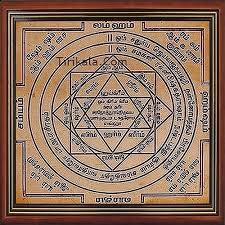
In the vast expanse of spiritual practices and ancient wisdom, sacred geometry stands as a timeless bridge between the physical and metaphysical realms. Among the myriad forms of sacred geometry, the yantra emerges as a profound symbol of cosmic energy and spiritual insight. This article embarks on a journey to explore the essence, origins, and contemporary relevance of yantras through online platforms, offering seekers a pathway to deeper understanding and personal transformation.
The Essence of Yantra
Yantra, derived from the Sanskrit words ‘yan’ (meaning instrument) and ‘tra’ (meaning liberation), encapsulates the essence of sacred geometry. At its core, a yantra is a geometric design imbued with spiritual significance and cosmic symbolism. It serves as a tool for meditation, ritual, and invocation of divine energies.
The construction of a original yantra online involves precise geometric patterns such as triangles, circles, squares, and lotuses arranged around a central point. Each element within the yantra holds symbolic meaning, representing cosmic forces, deities, or aspects of spiritual enlightenment. For example, the Sri Yantra, a complex geometric pattern of interlocking triangles and circles, symbolizes the union of masculine and feminine energies and embodies the cosmic order.
Origins and Evolution
Yantras trace their origins to ancient India, where they were developed as aids for spiritual practice and meditation. Over millennia, their use expanded across Hinduism, Buddhism, and other spiritual traditions, each incorporating yantras with unique symbolism and ritualistic practices.
In Hinduism, yantras are closely associated with specific deities and cosmic energies. They are used in ceremonies to invoke divine blessings, attract prosperity, and promote spiritual growth. The intricate geometry of yantras reflects the order and harmony of the universe, guiding practitioners on their journey towards enlightenment and self-realization.
The Spiritual Significance of Sacred Geometry
Sacred geometry forms the backbone of yantra design, integrating geometric shapes and principles that resonate with universal truths and cosmic energies. Triangles, circles, squares, and other geometric patterns within yantras are not arbitrary but chosen for their symbolic meanings and vibrational qualities.
Triangles, for instance, represent the trinity of creation, preservation, and destruction – fundamental aspects of the cosmic order in Hindu philosophy. Circles symbolize wholeness, unity, and eternity, while squares signify stability and the material world. The precise arrangement and proportions of these shapes create a harmonious energy field within the yantra, facilitating spiritual alignment and transformation.
Practical Applications and Online Explorations
In today’s digital age, the exploration of yantras has extended to online platforms, offering accessible resources and tools for spiritual seekers worldwide. Websites, blogs, and online courses dedicated to sacred geometry provide in-depth knowledge, guided meditations, and interactive tools for working with yantras.
original yantra online platforms offer a wealth of information on yantras, their meanings, and practical applications in meditation and spiritual practice. Seekers can explore different types of yantras, learn about their historical significance, and understand how to integrate them into their daily lives for spiritual growth and personal transformation.
Meditation and Spiritual Practice
Meditation with yantras is a transformative practice that enhances spiritual awareness and inner peace. Through focused meditation on the geometric patterns and symbols within a yantra, practitioners can access higher states of consciousness and connect with divine energies.
The process of yantra meditation involves gazing at the yantra, concentrating on its intricate design, and allowing the mind to enter a state of deep relaxation and clarity. This practice helps quiet the mind, dissolve distractions, and awaken inner wisdom and intuition.
Yantras in Contemporary Context
Yantras continue to hold relevance in contemporary spiritual practices and alternative healing modalities. Their universal appeal transcends cultural boundaries, making them accessible to people of diverse backgrounds and beliefs.
Online communities dedicated to yantras foster a sense of connection and collaboration among spiritual seekers. They provide forums for sharing experiences, insights, and practices related to yantra meditation and sacred geometry. Virtual workshops and webinars offer opportunities to learn from experts and deepen one’s understanding of yantras as tools for personal and spiritual transformation.
Conclusion
Discovering sacred geometry through original yantra explorations online offers a gateway to profound spiritual insights and personal growth. Yantras, with their intricate geometric designs and spiritual symbolism, provide a tangible means to connect with the divine and explore the mysteries of existence.
As we navigate the digital landscape of spiritual exploration, online resources on yantras empower individuals to delve deeper into their spiritual journey. Through meditation, study, and practical application, seekers can harness the transformative power of yantras to cultivate inner peace, clarity, and spiritual alignment.
In essence, the exploration of yantras online opens doors to ancient wisdom and contemporary practices, guiding individuals towards a deeper understanding of themselves and the universe. As we embrace the journey of discovering sacred geometry through yantras, we embark on a path of enlightenment, unity, and spiritual evolution.